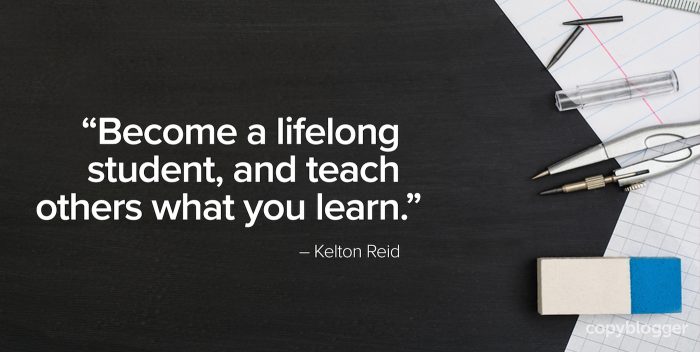By Rachel Haberman
Over the course of 2017, Skyword surveyed nearly one thousand content marketers from around the world on how content marketing is practiced within their organizations, stratifying each on the Content Marketing Continuum™, a framework for understanding the relative maturity of an organization’s content marketing program, from Bystanders and Novices through Experts (brand publishers with an always-on editorial strategy), Leaders (brand storytellers), and Visionaries (the top two percent of respondents).

In partnership with Clare McDermott, cofounder of Mantis Research and former editor-in-chief of Chief Content Officer, Skyword analyzed the results and published a research report in January 2018 that captured a snapshot of how content marketing is being practiced today and outlined the commonalities among the highest-performing content marketers.
Clare joined Skyword CMO Tricia Travaline on February 14, 2018 for a live discussion of the most interesting research findings. The following transcript has been lightly edited for length and clarity.
Storytelling Isn’t a Tactic, but a Mindset
Clare McDermott: Our first finding is that storytelling isn’t so much a tactic as a mindset. And by that we mean, we’re all showing up every day to publish e-books, publish blogs, to get it done one day after another—and that’s good. But we find that Leaders and Visionaries really have a sense of purpose that’s much bigger. Their content really is about sharing their organization’s values and culture, which is such an important part of telling good stories.

The survey asked, “To what extent have individuals and teams across your organization adopted the craft of storytelling?” Eighty-three percent of Visionaries reported widespread adoption. For Leaders, it was a little bit over half and Experts as little as 30 percent. The overall average was 27 percent.
I was actually a little bit surprised by how low this is, and I think the phrase that probably tripped people up and that dampened a positive response on this question was “across your organization.” I tend to think that’s what’s missing, that the marketing team knows the mission and knows the purpose, but it might not be shared across the organization. Tricia, would you agree with that? Do you feel the same way on that one?
Tricia Travaline: Yes, I absolutely do agree with that. We have heard the terms “story” and “storytelling” for several years now—in a way storytelling is marketing’s greatest buzzword—but not many people really understand the craft of storytelling. That’s one of the reasons that we partnered with Robert McKee, who is a storytelling guru and bestselling author. We have to be taught the craft. That’s why Tom, our CEO, is on the road with Robert teaching storytelling seminars, because it’s something that you have to learn, just like any craft, just like any form of art: You’ve got to learn it and then practice.
Creativity Needs Discipline
CM: And you perfectly teed up the next finding, which is about creativity requiring discipline. I like the way you talked about craft, because I think storytelling is an art and a craft. And by craft meaning, what are the standards, the tools, the processes that you put in place to ensure that you can do this consistently?

So let’s look at the data here. Again, the survey asked, do you use both brand standards and editorial guidelines for your content marketing program? Nearly all Visionaries say yes to both of those things. Leaders are at 70 percent, and Experts are at 40 percent. The average is about 31 percent. My hunch here is that most people are using brand standards. It’s something that they’re familiar with. Editorial guidelines? Not as much. It’s really a model from the media world.
For those who don’t know what editorial guidelines are, it’s setting your strategic goals—why are you publishing, who are you talking to, where are you going to find those people—as well as things like tone of voice, the topics you want to address, even the policies that you have for publishing.
So we see only 30 percent doing both of those. Tricia, is that your experience with Skyword customers, that they’re not using editorial guidelines? I guess the bigger question is, do people understand what they are and their value?
TT: We work with our customers to create editorial guidelines. But one of the reasons I think there’s a gap is that companies aren’t connecting their brand strategies to an always-on editorial strategy. Experts have pockets of innovation within their organization where they’ll have this really fabulous editorial strategy around a particular destination. But to move to a Leader status, you’ve got to be able to connect it to your brand strategy—what does your brand stand for, what is its purpose, which audiences share your values? And then, how does your always-on editorial strategy support your overall brand strategy? To me, a big thing that’s missing today is the connection between the two.
CM: I’d like to insert here how important it is that these documents are not static documents. They’re not something that you build once and then put it away and perhaps show it to the new hire; it’s rather something that you’re always updating, coming back to, and using as an exercise to think things through, to define what it is you’re doing and why.
Focus on Quantity or Quality? Do Both
CM: So number three: focusing on quantity or quality. The finding here is, do both. This one is, maybe not controversial, but perhaps counterintuitive. In the last year especially, there’s been such a big focus on quality, as well there should be. But really quantity still is important.

If you look at Visionaries and Leaders, they are simply doing more of everything, be it articles and videos and podcasts; sales-related content; advertising; serial and episodic content; or movies, conferences, and concerts, those being obviously much less common.
The one that interests me the most here is the serial content. It’s such a huge opportunity for brands and not something people are doing a lot of. The one example that I point to with serial and episodic content is Intel. They do a fabulous job with this, and they’ve taken on really complex issues like AI and virtual reality and laid it out in a very consistent way. They tell stories through many different forms and many different channels and do a beautiful job making serial content.
Tricia, is there anything else you’d call out here?
TT: As you say, you hear a lot of people saying, don’t focus on quantity, focus on quality—but what we’re finding is that the Leaders and the Visionaries are doing both. I think it has to do with this idea that you are creating customer relationships versus focusing on transactions. It depends upon how close you want that relationship to be. If you want to be interacting with your audience on a daily basis, you need to have new content, refreshed content out there on a daily basis. If you only have new content once a month or once every six months, then that’s how often you’ll interact with your audience.
In order to reach people via search and to have Google reward your content, you have to have new content out there. You have to be doing things differently if you want people to come back to you as a destination, to use you as a resource, to interact with you daily. You have to be there for them when they are looking for that content.
Need Help Organizing Your Team? There Are No Rules
CM: Let’s move on to finding number four: Do you need help organizing your team? So, do you want some sort of formula to apply to your own organization to know how to set up your team? Here there truly are no rules.

Looking at these two charts—and here we’ve segregated out just the Leaders and Visionaries and asked who is responsible for producing the majority of your content—you can see here that there’s no one way to do it. There’s a lot of diversity in how it’s done. Some people are calling on people throughout the organization to publish. Sometimes it’s really focused in marketing. Sometimes it’s calling on freelancers.
I think the message here that’s really important is that we’re all operating under a set of constraints: Our companies are organized in a certain way, we maybe have a global organization where there are content teams dispersed in different regions or different divisions, you may have different amounts of talent throughout the organization, even different technology. So when people ask me this question, the answer is it kind of depends. It depends on what you have and what you’re going for.
Tricia, do you find anecdotally that this is something people struggle with in terms of what’s the best way to organize and staff their teams?
TT: Absolutely. We’re finding that some of them don’t have the right skill sets in house. Especially if you’re in that Novice stage, and you’ve had very traditional roles. All of a sudden you have to be hiring editors and strategists and analysts and bringing in different skill sets. It’s not easy to transform traditional marketing teams.
One thing that we are hearing from the marketplace in a big way is that they need to connect their teams. They need to give senior management the visibility into what’s happening throughout the marketing organization. They need to eliminate the silos that exist. These companies have advanced content marketing operations that are fueling all of their channels, and they need to work more efficiently. That’s something that marketers at all levels are struggling with today.
CM: That’s interesting. The other thing I hear a lot of too is that when a company does hire a lot of outside talent and freelancers in particular, is how to ensure that those people, even if they are not traditionally employed by the organization, that they understand the values and the culture—that they are still a part of the team even if they are not traditionally part of the team. Do you find that too?
TT: Absolutely. Our services team oftentimes takes on the role of educating those freelancers and to make sure that they’re really in tune with the brand. Both our editorial team and our services team work really closely with our clients’ freelancers to ensure that they are always up to speed.
We spend a lot of time with our freelance writers who contribute to the Content Standard to make sure that they know what our strategy is, how our audience is changing, what our voice is. Training and ongoing communication is critical whether you’re managing internal subject matter experts, or whether you’re managing freelancers.
Visionaries Take an Iterative, Agile Measurement Approach
CM: So finding five: Visionaries take an iterative, agile measurement approach. It’s never more true than today that you can’t just dial in your KPIs and decide this is how we’re going to do things and just sit back and watch success come to you, because it just no longer works that way.

What we’re seeing here is that Visionaries tend to focus on strategic measurements—things like engagement and goal conversions and sales attribution being the holy grail. That is so hard to do, but somehow 91 percent of Visionaries and a little more than half of Leaders have figured out how to do that. It’s notoriously challenging.
The real head-scratcher for me here is that 18 percent are not measuring at all. Tricia, do you think that’s surprising?
TT: Yes, absolutely. I think that not measuring your content in any way goes against everything that we do as marketers today.
CM: The thing that is really hard is to measure over time and to figure out why things are successful. Is it because of a new algorithm, or is it because you’re doing something else right? That is so true now more than ever. I’m sure you’re seeing a lot of angst over all the algorithm changes and resulting changes in traffic and really trying to figure out why that is. Is that true?
TT: That is so true. For instance, even now, Google is about to come out with new algorithms around mobile and you can’t control what they do.
So you have to be agile, you have to be constantly measuring your content’s performance to know if there’s been a change in it. You have to be constantly monitoring, and then you have to be agile enough to respond to changes that are out of your control.
You also have to continually try new things, experiment with different things, and measure them. If they work, keep on doing them; if they don’t work, don’t be afraid to walk away.
Pain Is Universal
CM: So on what you just spoke about, Tricia, experimenting and iterating, let’s get to our last finding, which is actually my favorite, because it is so true and I like to spread this message among stressed-out marketers, and that is that pain really is universal.

When you look at Visionaries compared to all others on these various issues, they tend to worry less about some things, not surprisingly perhaps, about resources and budget, but they are challenged on many other issues at the same rate as everyone else.
I think that’s a really nice way to end in the sense that we as marketers really have to make peace with discomfort. If you’re feeling discomfort, if you’re feeling stress, that actually means that you’re pushing, you’re learning, you’re taking risks. I think that moment when you feel secure—I’ve got this, I’m doing this just the right way—is perhaps a sign that you’re not pushing hard enough.
In fact, it’s a topic that I wrote about recently for the magazine: When you’re managing teams, how do you keep that balance between wanting to support your team, wanting to inspire confidence, but at the same time wanting to keep pushing people to that point of discomfort so that they can learn something new and so that your team can take on new ideas and new experiments?
TT: If you move into the Leader or the Visionary stage, the work doesn’t get easier; it gets harder, because you’re challenging yourself more. You’re asking yourself to be great. I always say that we’re not looking for perfection but we are looking for excellence.
I’m going to quote Robert McKee here. One of the things that he always says is that even though marketers love the term “journey,” he hates it. He says life is not a journey; it’s a struggle. And in marketing, I truly believe that the sooner we accept that marketing is not a journey but a struggle, the more likely we are to be able to deal with the pressure that exists within it. We accept the fact that this is a struggle, and we’re going to struggle together at it.
CM: I think that’s so true. Probably about six weeks ago, I had a conversation with a very well-known marketer who’s published a lot of books, and I won’t say who it is, but he said to me, “I don’t know what the hell I’m doing!” And we all really have to understand that even those people who really seem like they know exactly what to do and are sharing their expertise with others, we’re all really just trying to figure this out.
For more, download the report: Inside the Content Marketing Continuum™.
Rachel Haberman is a consummate word nerd with a lifelong fascination with all things language. She holds a BA in Cognitive and Linguistic Sciences from Wellesley College. Before joining Skyword, Rachel managed content marketing for an international development and strategy consulting firm. She lives in Cambridge, Massachusetts with her husband and two cats named after physicists.See more from Rachel









































